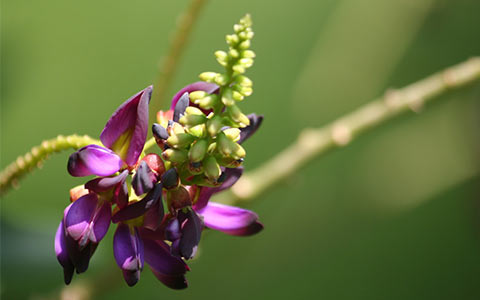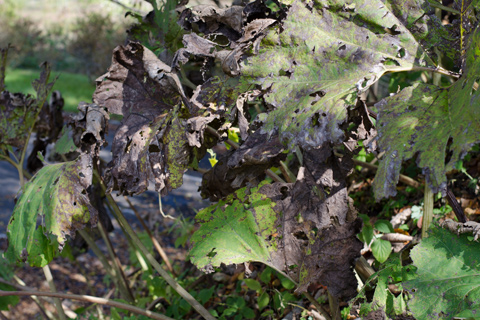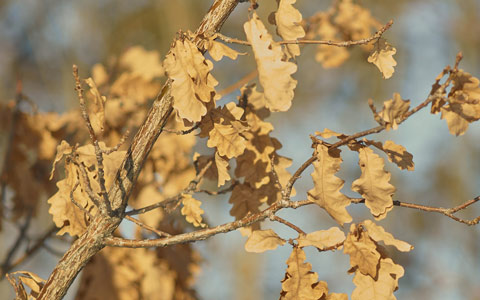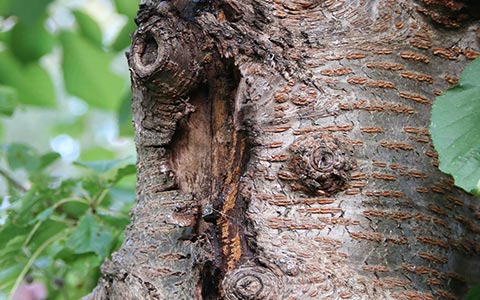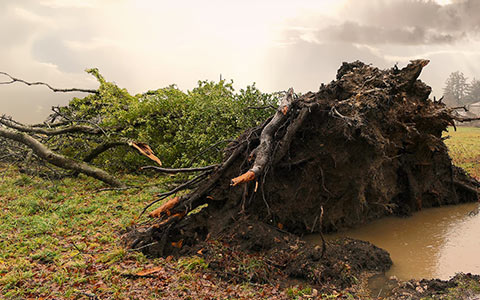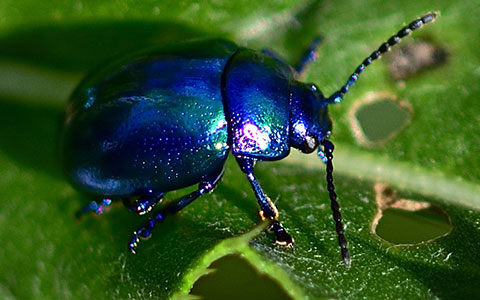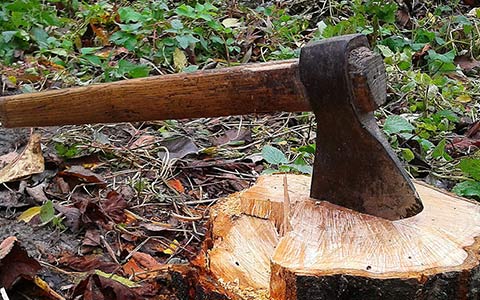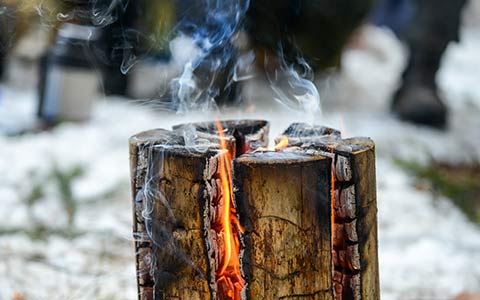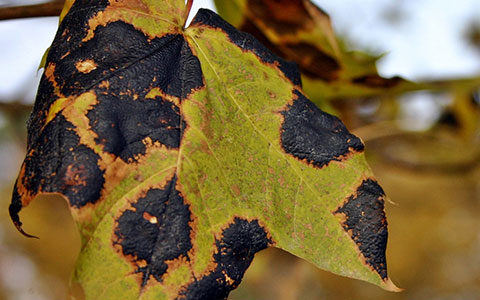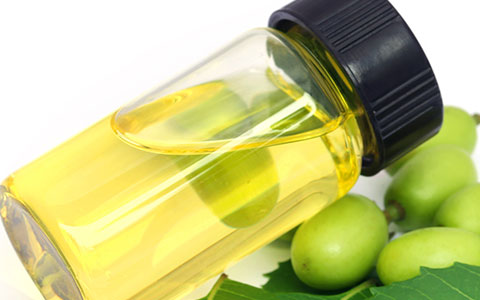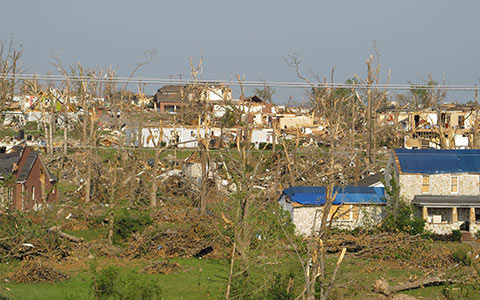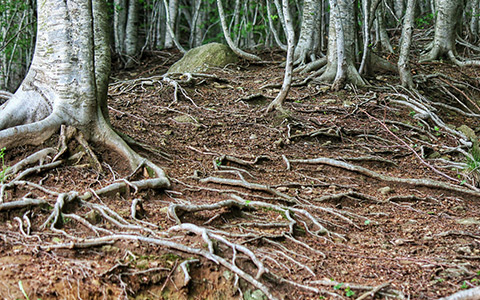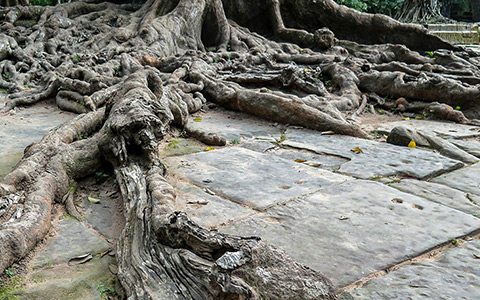
Don’t let root rot cause your trees to suddenly decline, die, and fall. Knowing how to identify root rot symptoms will help you save your tree or take action before it causes catastrophic property damages.
72tree.com gathered information on the causes of root rot in trees, how to recognize its symptoms, and what treatments you can use to stop or prevent it.
Tree Root Rot Causes
When root rot attacks a tree, the flow of water and nutrients from the roots to the crown is either impeded, or the invading pathogen is carried throughout the tree, killing its host. The following are several of those pathogens:
Rhizoctonia (this fungal pathogen adversely affects younger hosts, older trees are found to be more resistant)
Pythium (this fungus of the Pythiaceae family has 140 known species, most of which are now classified as parasites)
Rhododendron Root Rot (Phytophthora cactorum and Phytophthora cinnamomi were first thought to only survive in subtropical countries but is now known to thrive in cooler countries)
Fusarium (found worldwide, some of this pathogen’s species can adversely affect humans when infected crops are consumed)
Rosellinia necatrix (Dematophora necatrix, Hypoxylon necatrix, and Pleurographium necator, known as one of the most devastating plant fungal diseases, affecting several fruit tree and crop species)
Honey Fungi, Shoestring Root Rot, or Openky (Armillaria frequently occurs in hardwoods and pines)
Texas Root Rot (Phymatotrichopsis, Phymatotrichum, Cotton, or Ozonium root rot occurs more frequently in Mexico and the southwestern United States, causing sudden wilt and death)
Note: Fungal spores naturally occur and lie dormant in soil. These spores only begin reproducing when conditions support it. Such conditions include compacted soil, poorly-drained soil, and overwatering. As the fungi reproduce, tree roots provide a prime source of nutrients, allowing them to spread quickly.
Symptoms of Tree Root Rot

Most visible symptoms of root rot strikingly resemble the signs of an advanced pest infestation, making an accurate diagnosis more difficult. The most common, above ground, symptoms of root rot include:
• Gradual or sudden decline without a detectible reason
• Severely stunted or poor growth patterns
• Smaller, chlorotic leaves or needles (new growth)
• Wilted, yellowed, or browned leaves or needles
• Dieback
• Severe canopy thinning
• Stress crops (abnormally large amount of fruit/seeds)
• Fungal fruiting structures (mushrooms) found on the root flare or growing from surface roots
• Once in the xylem and phloem (cambium), cankers or sunken dead areas may appear on branches or the trunk of the host
A more accurate way to diagnose root rot is to dig to the roots to see if decay is present. Care should be taken when exposing roots to avoid inflicting further harm to the tree.
Note: Anthracnose is another group of fungal pathogens that cause similar above-ground tree damage but are not typically associated with root rot. You can find further information about anthracnose at 72tree.com/symptoms-of-anthracnose/
Tip: Hire an ISA certified arborist to inspect and accurately diagnose the cause(s) of the symptoms you have identified.
Tree Root Rot Treatment
Trees can sometimes be saved early on by pruning out infected roots. If a tree is in an advanced state of decline, the recommended way to control root rot diseases from spreading is to entirely remove it.
Chemical treatments that include propiconazole, chloropicrin, fosetyl-aluminum, or methyl bromide, among others, won’t completely cure or remove the disease but can reduce the infection level. These treatments are applied in and around the root plate of infected trees and especially in holes left after infected trees, and their stumps have been removed.
Note: The application of chemical treatments on your trees (for any reason) should be performed as directed on the product labeling and closely monitored by a certified arborist.
Root Rot Prevention for Trees

Trees have adapted over millennia to protect themselves against infection and illness. They are efficient at protecting themselves when healthy, and you can further assist them in resisting root rot by:
• Avoiding overwatering
• Ensuring proper water drainage by amending/enriching soil structure
• Preventing soil compaction on or around the root plate
• Protecting surface roots and trunks from mechanical and/or equipment damage
• Immediately addressing storm damage and/or soil erosion
• Removing unsalvageable trees from your property
• Planting disease-resistant species
Tip: You can also help trees fight fungal attacks by promoting their health. These are some of the things you can do to improve their health:
• Seasonal pruning
• Seasonally applying and refreshing organic mulch
• Deep watering (especially during drought conditions)
• Pre-growing season fertilization
• Annual tree inspections by a certified arborist
Note: The importance of annual tree inspections cannot be overstated. The ability to detect problems in their beginning stages offers more options to eliminate existing problems and take measures to prevent issues throughout the tree’s growing season.
Tree Root Rot
In this article, you discovered valuable information about the causes of tree root rot, recognizing its symptoms, and how to treat it or prevent it.
Taking swift action when root rot is suspected in your trees will increase your chances of saving them and preventing further infection.
Ignoring the signs of root rot will render your tree unsalvageable, invite other disease and infestation, and potentially cause catastrophic property damage when your tree destabilizes and falls.
Sources:
extension.umd.edu/hgic/topics/root-rots-trees-and-shrubs
ceventura.ucanr.edu/Com_Ag/Subtropical/Avocado_Handbook/Diseases/Root_rot,_how_to_spot_it_and_what_to_do_about_it/
forestpathology.org/root-diseases/
extension.psu.edu/rhizoctonia
hyg.ipm.illinois.edu/pastpest/199922c.html

